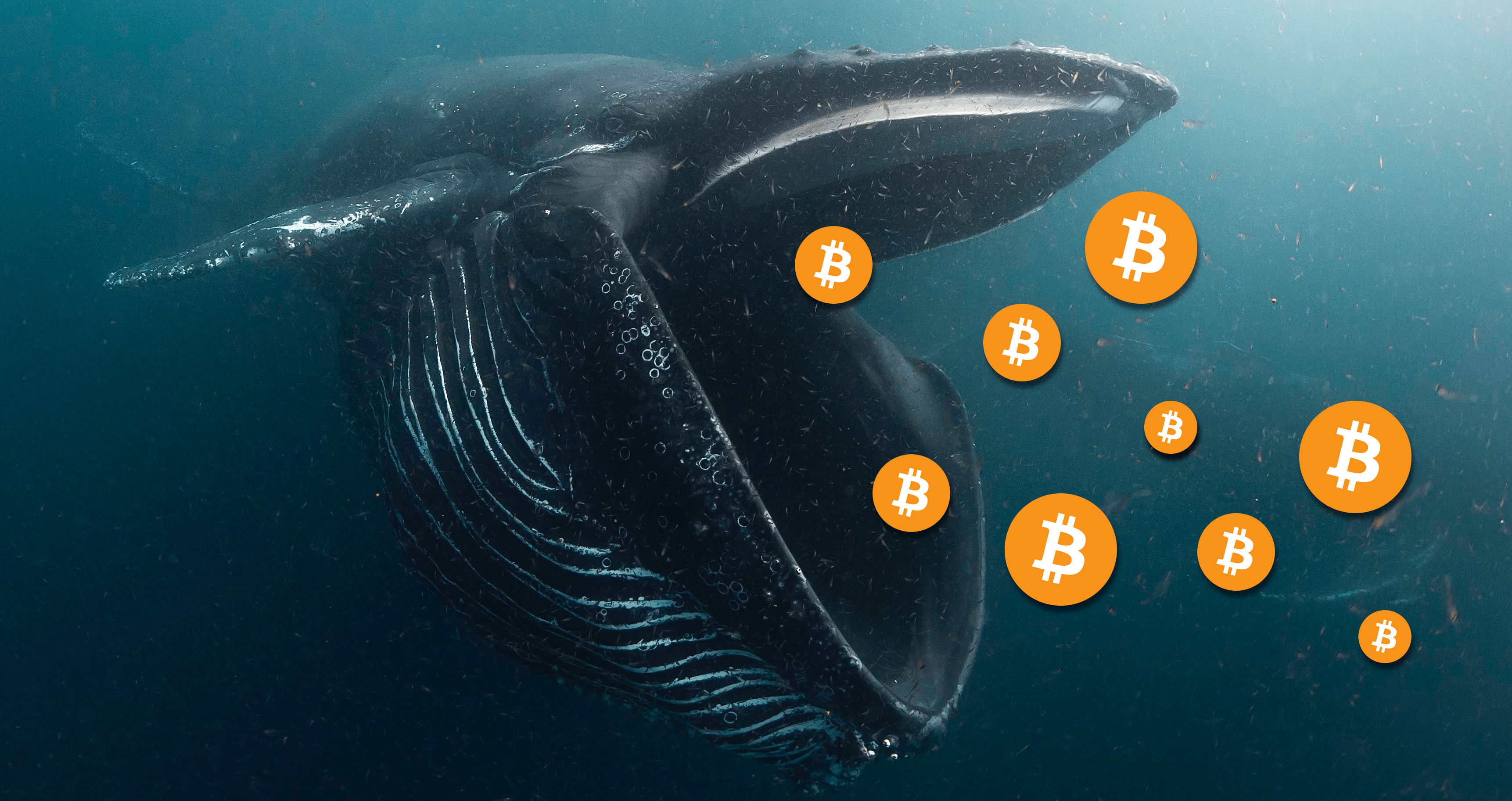
Footsteps of Bitcoin and CryptoCurrency Whales I. - Bitcoin Whales
2020-06-30 | CryptoCurrency.org
Although the majority of Bitcoin whales are anonymous, there are some that are popularly known to own the largest shares in the total supply of Bitcoin.
If we take a look at Bitcoin holdings data, it will show a potentially troubling trend among the anonymous accounts, i.e. increased consolidation among large owners. Investors with 1,000 to 1 million bitcoins, often referred to as whales.

Who are the Bitcoin whales?
This unique term — Bitcoin whale — was coined to represent a vital component of the crypto world. They are an individual or entity that owns or controls a large amount of Bitcoin in the Bitcoin market; as the name suggests, they are the biggest fish in the Bitcoin sea. There are also all types of whales like BTC whales, ETH whales, and BCH whales. The definition of a BTC whale would be a person or organization (a single address) with around 1,000 BTC or more. Whales with around 1,000 BTC would be considered small whales at the time of writing this article. Then there are even bigger whales than the 10K BTC holders, as there are three addresses with anywhere between 100,000 to 1,000,000 BTC today. A whale address that has 100K BTC is worth around $873 million at today’s exchange rates. In December 2018, there were more 100K or more addresses than today, as five of them held these balances; February 2019, and the number remained the same with only five addresses holding 100K BTC.
It can be argued that the decentralized nature of the Bitcoin network is threatened by these entities since they control a significant percentage of the total supply of the cryptocurrency. These perceptions have instigated many of the investigations and the scrutiny of the market activities of individuals and organizations called whales, since they jeopardize everyone with their actions on the market, making the Bitcoin trading look more like gambling.

How to watch for (yet) unknown whales?
It is possible for hedge funds or Bitcoin whales to cause a chain reaction in the Bitcoin market. As a result, it is common to see small traders monitor the market activities of covert price manipulation schemes in order to ride the wave and profit from the induced price movements. It will probably come as no surprise to hear that exchanges are the biggest Bitcoin HODLers. 6.7% of the current circulation (some $9.8 billion) is held on exchange wallets. Here are some of the things to look out for:
- the acceleration of the trading volume: trading volume of Bitcoin is almost always evenly balanced, so as soon as a whale influences the market, the volume tends to spike, and either the buying percentage or the selling percentage is bound to surge.
- unexplained surge or decline of the price of Bitcoin: prices of cryptocurrencies experience major momentum due to announcements, news, etc.. But, if there’s no explanation for new activity, it’s possible crypto whales are influencing a cryptocurrency’s value.
- cancellation or the pop-up of large orders and bids: the bid size of Bitcoin can significantly increase when a whale is actively engaging the crypto market. In addition, the sudden cancellation of big orders could signify that the price of Bitcoin will fluctuate.

List of well-known Bitcoin whales
Although the majority of Bitcoin whales are anonymous, there are some that are popularly known to own the largest shares in the total supply of Bitcoin.
- Satoshi Nakamoto — the pseudonym of the anonymous creator of Bitcoin, and they allegedly own around 1.1 million Bitcoin, which presently should be worth around $6.5 billion.
- The Winklevoss Twins — the brothers who sued Mark Zuckerberg for the theft of their intellectual property invested $11 million of the $65 million they won from the lawsuit to buy 1.5 million Bitcoin back in 2013.
- Garvin Andresen — he has been a key figure in the Bitcoin market since its inception. He is currently the chief developer of Bitcoin’s open source code. At one point, he received $200,000 in BTC for his contributions to the growth of the Bitcoin network.
- Roger Ver — popularly known as Bitcoin Jesus, he is one of the early adopters of Bitcoin, and he allegedly owns nothing less than 100,000 Bitcoins.
- Barry Silbert — also an early adopter of Bitcoin, and the founder of Digital Currency Group. He reportedly bought 48,000 Bitcoins for $16.8 million in 2014 when the US Marshals auctioned the Bitcoins it had seized from operators of the dark web. His Bitcoin stash should be worth around $312 million in today’s Bitcoin market.
Conclusion — decentralization and liquidity
The level of liquidity of an asset is determined by its stability and convertibility. Bitcoin’s convertibility is very much guaranteed, as the cryptocurrency can be exchanged for other assets in seconds. The stability of the Bitcoin market still bears some reservations on all parties included: although the Bitcoin market has shown a certain level of maturity in the past few years, it is susceptible to price manipulations because it is still in its infancy stage. The activities of institutions and individuals who have strong buying power, like Bitcoin whales, can easily sway the price of the cryptocurrency. Crypto hedge funds thrive on the instability of the Bitcoin market — events like the liquidation of 30,000 BTC by a whale in 2014 proves that hedge funds have found a way to continue to do this in an almost obscure manner.
Enjoy reading? Please share:
Get the latest crypto news, updates and reports by subscribing to our free newsletter!






